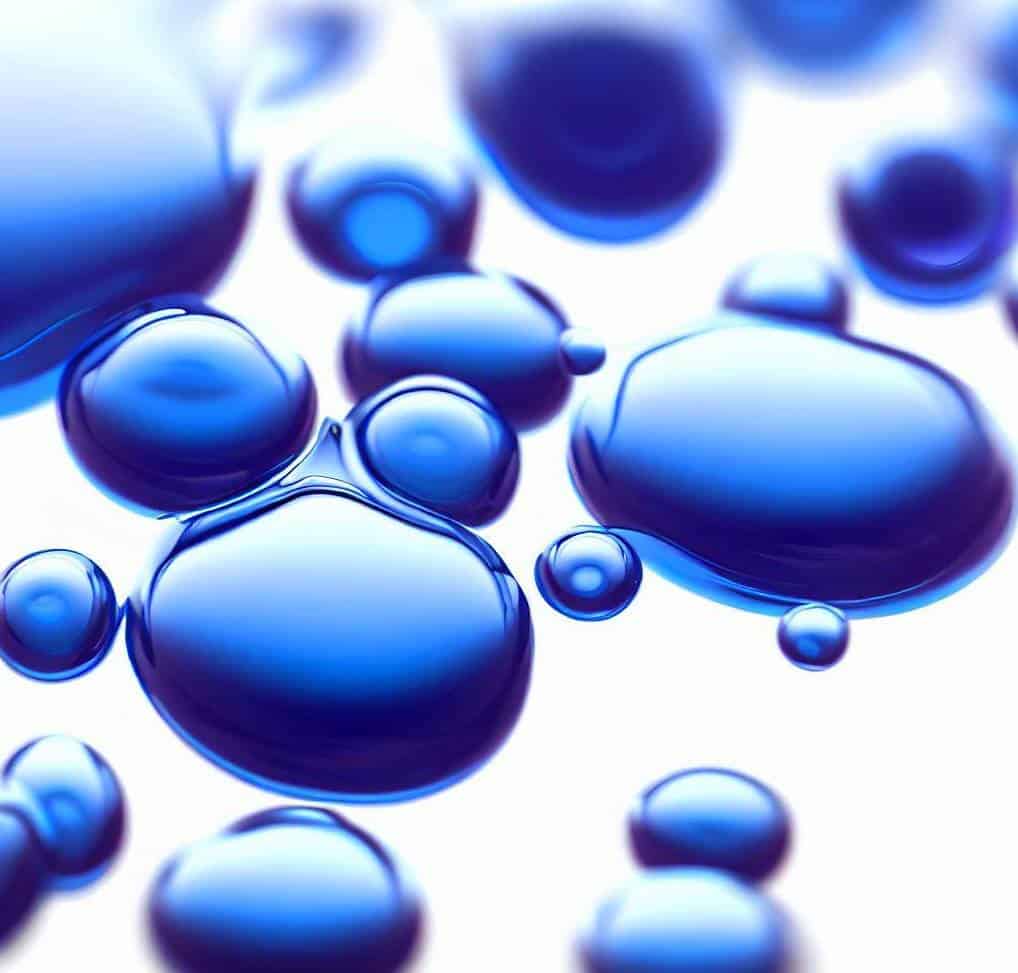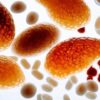Methylene Blue: An Intro
Methylene Blue, a remarkable substance with multifaceted benefits, has captured the attention of the integrative medicine community. From increasing cellular energy to enhancing cognitive function and exhibiting antimicrobial properties, this compound offers a plethora of advantages. In this blog post, we will delve into the key functions and historical significance of Methylene Blue, shedding light on its unique capabilities and the potential it holds for human health and well-being.
Key Functions of Methylene Blue
Cellular Energy Boost
Methylene Blue enhances the energy production of our cells, supporting overall bodily functions and vitality. It can be beneficial for those looking to increase their energy levels and improve their general well-being.
It acts as a “magic bullet” by augmenting the voltage of mitochondria, which serve as the cell’s powerhouses. These mitochondria convert food energy into a usable form for the body. By contributing extra electrons to the electron transport chain within the mitochondria, Methylene Blue raises the voltage of the inner membrane, resulting in increased production of adenosine triphosphate (ATP). This boost in cellular energy supports optimal bodily functions.
Cognitive Enhancement
Methylene Blue acts as a brain booster and has gained recognition as a potent cognitive enhancer and nootropic, known for its ability to improve brain function. By increasing ATP production specifically in the brain, it provides the necessary energy for optimal cognitive performance. This effect makes Methylene Blue an intriguing option for those seeking to enhance focus, memory, and overall mental abilities.
Anti-Aging Properties
One of the remarkable benefits of Methylene Blue is its anti-aging potential. It aids in the production of sirtuins, which play a vital role in cellular repair and protection against age-related damage. By slowing down telomere destruction, a marker of aging, and promoting cell repair, this nearly magical substance supports longevity and cellular health.
Antimicrobial Effects
Methylene Blue showcases antimicrobial properties, making it effective against a range of pathogens. When combined with red light therapy at specific wavelengths (590-700nm), it exhibits efficacy against viruses, bacteria, parasites, fungi, protozoa, and even tumor cells. The introduction of red light triggers the release of oxygen, which eradicates these harmful pathogens. This combination of Methylene Blue and red light therapy holds promise for various medical applications.
Historical Significance
Methylene Blue boasts a rich history dating back to the late 19th century. Originally utilized as a textile dye in 1876, it swiftly found its way into medical practice. In 1891, it became the preferred treatment for malaria, revolutionizing the battle against this deadly disease. Over time, this substance found applications as a tissue stain for pathology slides and as an antiseptic during World War I and II for malaria and infections. It has also been employed in emergency rooms as a last-ditch effort in critical situations.
The Science Behind Methylene Blue
Innovative Therapeutic Uses
Methylene Blue, also known as methylthioninium chloride, continues to emerge as a versatile therapeutic agent. It is utilized in addressing ifosfamide-induced encephalopathy, a side effect from the chemotherapy agent ifosfamide. As a monoamine oxidase inhibitor, methylene blue helps decrease the neurotoxic metabolites of the drug, effectively reversing the encephalopathy symptoms.
In addition to this, this substance has been employed in the successful treatment of methemoglobinemia, a condition marked by raised methemoglobin levels in the blood. It effectively converts methemoglobin back into hemoglobin, improving the oxygen delivery capabilities of red blood cells, and thus enhancing overall cellular performance.
Moreover, this substance has been recognized as a potent counter-agent in cyanide poisoning. It helps the body transform cyanide into less harmful substances that can be safely excreted. Although this substance is not advised for those with a glucose-6-phosphate dehydrogenase (G6PD) deficiency due to the risk of hemolytic anemia, the innovative ways it is used continue to expand, with its role in treating conditions like vasoplegic syndrome currently being studied.
The Remarkable Synergistic Effects and Safety of Methylene Blue
When used appropriately, this substance has been found to interact favorably with other medications. The caution to avoid use with serotonin reuptake inhibitors, for instance, is a testament to the effectiveness of this nearly magical substance in influencing serotonin levels in the body, which can be beneficial in other contexts.
In terms of blood pressure regulation, it has been shown to have positive impacts. It can be used in certain cases of vasoplegic syndrome, a condition that causes severe low blood pressure following cardiopulmonary bypass surgery.
Methylene blue is generally well-tolerated, with allergic reactions being rare. Nonetheless, identifying abnormal reactions quickly is a crucial part of ensuring that everyone can experience the benefits of this substance safely. Always remember to consult a healthcare provider to better understand the potential benefits and to monitor for any side effects.
It is important to underscore the point that despite its myriad benefits, methylene blue should be used judiciously and under medical supervision to ensure safety and effectiveness. This versatile compound continues to be a subject of investigation, with ongoing studies revealing new ways it can contribute to healthcare solutions.
Conclusion
Methylene Blue offers a remarkable array of benefits, ranging from increased cellular energy and enhanced cognitive function to antimicrobial effects and anti-aging properties. Its historical significance, coupled with its current applications in integrative medicine, makes it an exciting subject of research and exploration. The Remedy Room stands at the forefront, harnessing the potential of Methylene Blue to revolutionize healthcare.
Ready to experience the myriad benefits of Methylene Blue for yourself? Don’t wait! Elevate your well-being today with our high-quality Methylene Blue drops. Click here and start your journey towards enhanced health and vitality now! Also, don’t forget to check out The Remedy Room’s services page for exciting biohacking opportunities.
Frequently Asked Questions
What is the drug methylene blue used for?
Methylene blue is a versatile medicine used for a variety of health conditions. One of its main uses is to treat a condition called methemoglobinemia, which happens when a type of protein in the blood that carries oxygen to our body’s cells isn’t working properly. Methylene blue helps to fix this protein, so it can carry oxygen again.
Another important use for this substance is to treat certain side effects caused by chemotherapy. For example, the chemotherapy drug ifosfamide can sometimes cause symptoms such as confusion, drowsiness, or mood changes, a condition known as ifosfamide-induced encephalopathy. Methylene blue helps to alleviate these symptoms.
In addition, it can also act as an antidote for cyanide poisoning. It’s even being explored as a treatment for conditions like low blood pressure after heart surgery, and it may have benefits in fighting infections when used in a specific type of light therapy. But like all medicines, this should be used carefully under the guidance of a doctor because it can have side effects and interact with other medicines.
What are the benefits of methylene blue for humans?
Methylene blue is a versatile compound that offers several health benefits for humans. One of its primary functions is treating a condition known as methemoglobinemia, where a type of protein in our blood, which normally carries oxygen, isn’t working properly. Just as a delivery van carries packages to different addresses, this protein delivers oxygen from our lungs to all parts of our body. In methemoglobinemia, the “delivery van” is broken. Methylene blue helps fix this problem, restoring the body’s ability to deliver oxygen effectively.
Another significant benefit of this substance is its role in treating side effects caused by a specific chemotherapy drug, ifosfamide. Sometimes, ifosfamide can cause issues like confusion or mood changes. In these cases, methylene blue can help reduce these symptoms. Additionally, it’s been used as an antidote for cyanide poisoning, and it’s even being studied for its potential to treat conditions like low blood pressure after heart surgery, and to fight off infections when used with a certain type of light therapy. Despite these benefits, like any medication, it should always be used under the guidance of a healthcare professional.
Can methylene blue be taken orally?
Yes, methylene blue can indeed be taken orally and its benefits can be quite significant when administered under the direction of a healthcare professional. Depending on the condition being treated – whether it’s a metabolic disorder or a specific type of poisoning – a healthcare provider will be able to prescribe the correct dose, showcasing methylene blue’s versatile therapeutic applications.
It’s noteworthy that while taking methylene blue orally, there may be harmless changes such as a shift in urine or stool color – a small trade-off considering its potential benefits. Moreover, a healthcare provider’s supervision ensures that any side effects, which are rare, can be quickly addressed and managed, ensuring a safe and effective treatment process. Methylene blue’s oral administration offers a straightforward method to harness its health-enhancing properties, which makes it a valuable tool in medicine.
Is methylene blue an azo dye?
Methylene blue is not an azo dye. Instead, it belongs to the class of compounds known as thiazine dyes. This substance is characterized by its unique chemical structure, which contributes to its vibrant blue color and various medical uses. Azo dyes and thiazine dyes are both used for their coloring abilities, but they belong to different classes and have different structures and properties.
What’s particularly impressive about this substance is its versatility. Not only is it a brilliant blue dye, but it also has significant medicinal applications. From its use in treating conditions like methemoglobinemia, a blood disorder, to its role in managing side effects of certain chemotherapy drugs, methylene blue’s therapeutic benefits are a testament to its unique chemical makeup. This multi-purpose compound continues to serve as a valuable tool across a range of scientific and medical disciplines, underscoring its importance and utility.






